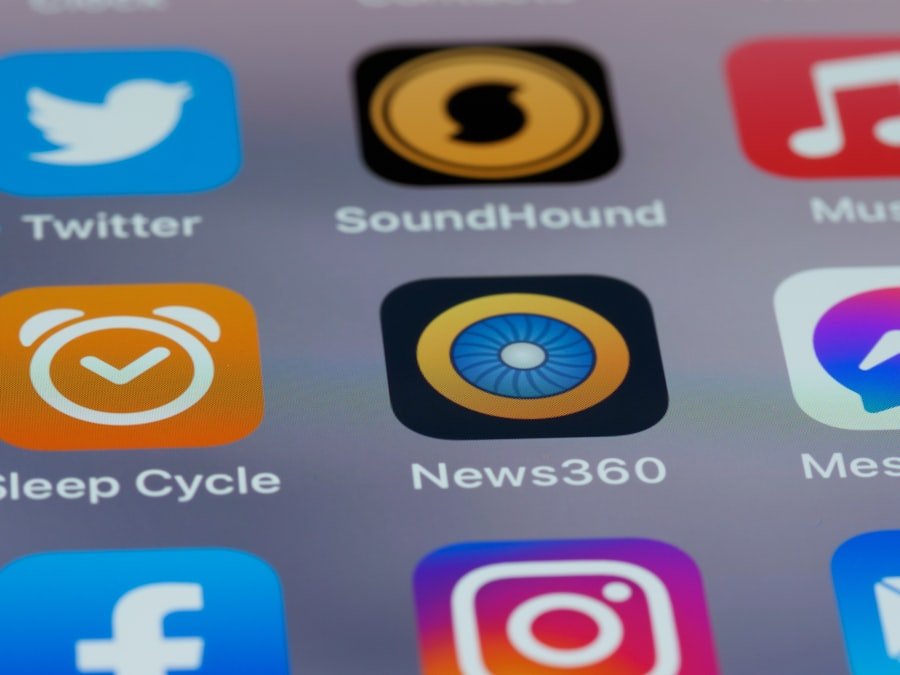In the realm of digital marketing, understanding your audience is not just a step in the process; it is the foundation upon which all successful strategies are built. Knowing who your audience is—what they value, their pain points, and their preferences—enables you to tailor your messaging and content effectively. This deep understanding can be achieved through various methods, including surveys, social media analytics, and customer feedback.
For instance, a recent study revealed that brands that invest in audience research see a 20% increase in engagement rates. This statistic underscores the importance of knowing your audience inside and out. Moreover, audience segmentation plays a crucial role in this process.
By categorizing your audience based on demographics, interests, and behaviors, you can create more personalized content that resonates with each segment. For example, a fitness brand might target millennials with high-energy workout videos while offering wellness tips to older adults. This tailored approach not only enhances engagement but also fosters loyalty, as customers feel understood and valued.
Ultimately, the more you know about your audience, the more effectively you can communicate with them, leading to higher conversion rates and brand advocacy.
Key Takeaways
- Understand your audience’s demographics, interests, and behaviors to tailor your content effectively.
- Create engaging content that resonates with your audience and encourages interaction and sharing.
- Maintain a consistent posting schedule to keep your audience engaged and interested in your content.
- Utilize relevant hashtags to increase the visibility and reach of your posts to a wider audience.
- Collaborate with influencers in your niche to expand your reach and credibility with their followers.
Creating Engaging Content
Once you have a firm grasp of your audience, the next step is to create content that captivates and engages them. Engaging content is not merely about being informative; it’s about telling a story that resonates with your audience’s emotions and aspirations. Consider the power of storytelling in marketing.
Brands like Nike and Apple have mastered this art by weaving narratives that inspire and connect with their customers on a deeper level. For instance, Nike’s “Just Do It” campaign transcends mere product promotion; it speaks to the inner drive of athletes and everyday individuals alike. In addition to storytelling, incorporating various content formats can significantly enhance engagement.
Videos, infographics, podcasts, and interactive content such as polls or quizzes can cater to different preferences within your audience. A report from HubSpot indicates that video content is 1200% more shareable than text and images combined. This statistic highlights the importance of diversifying your content strategy to include visually appealing and interactive elements that encourage sharing and participation.
By doing so, you not only capture attention but also foster a community around your brand.
Consistent Posting Schedule

Consistency is key in the digital landscape. Establishing a regular posting schedule helps maintain visibility and keeps your audience engaged over time. When followers know when to expect new content from you, they are more likely to return to your channels regularly.
This predictability builds trust and reinforces your brand’s reliability. For example, brands like Buffer have thrived by adhering to a consistent posting schedule across their social media platforms, resulting in increased follower engagement and brand loyalty. However, consistency does not mean sacrificing quality for quantity.
It’s essential to strike a balance between posting frequently enough to stay relevant while ensuring that each piece of content adds value. A well-planned content calendar can help you manage this balance effectively. By mapping out your posts in advance, you can ensure a diverse mix of content types and themes that align with your audience’s interests.
This strategic approach not only enhances engagement but also allows for timely responses to industry trends or events, keeping your brand at the forefront of conversations.
Utilizing Hashtags
Hashtags are more than just trendy phrases; they are powerful tools for increasing the visibility of your content. By strategically incorporating relevant hashtags into your posts, you can expand your reach beyond your existing followers and tap into broader conversations within your industry.
This statistic highlights the potential of hashtags to amplify your message and connect with new audiences. To maximize the effectiveness of hashtags, it’s crucial to conduct thorough research on which ones resonate most with your target audience. Tools like Hashtagify or RiteTag can help identify trending hashtags relevant to your niche.
Additionally, consider creating a branded hashtag unique to your campaigns or initiatives. This not only encourages user-generated content but also helps build a community around your brand. For instance, Coca-Cola’s #ShareaCoke campaign successfully encouraged consumers to share personalized Coke bottles on social media, resulting in millions of user-generated posts and increased brand visibility.
Collaborating with Influencers
Influencer marketing has emerged as a formidable strategy for brands looking to expand their reach and credibility. Collaborating with influencers who align with your brand values allows you to tap into their established audiences and gain trust through authentic endorsements. A study by Nielsen found that 92% of consumers trust recommendations from individuals over brands, underscoring the power of influencer partnerships.
When selecting influencers for collaboration, it’s essential to consider not only their follower count but also their engagement rates and relevance to your target audience. Micro-influencers—those with smaller but highly engaged followings—can often yield better results than larger influencers due to their perceived authenticity. For example, a beauty brand partnering with a micro-influencer who genuinely loves their products can create more impactful content than a celebrity endorsement that feels disconnected from the brand’s core message.
By leveraging influencer relationships strategically, brands can enhance their visibility and foster deeper connections with potential customers.
Engaging with Your Followers

Engagement is a two-way street; it’s not enough to simply broadcast messages to your audience—you must actively engage with them as well. Responding to comments, answering questions, and acknowledging feedback are all vital components of building a strong relationship with your followers. This level of interaction fosters a sense of community around your brand and encourages loyalty among customers.
Moreover, consider hosting live Q&A sessions or AMAs (Ask Me Anything) on platforms like Instagram or Facebook. These interactive formats allow followers to engage directly with your brand in real-time, creating an opportunity for authentic conversations and deeper connections. A study by Sprout Social found that 70% of consumers feel more connected to brands that respond to them on social media.
By prioritizing engagement, you not only enhance customer satisfaction but also position your brand as approachable and responsive.
Utilizing Different Platforms
In today’s digital landscape, it’s essential to diversify your presence across multiple platforms rather than relying solely on one channel.
For instance, while Instagram is ideal for visually-driven content, LinkedIn serves as a professional networking hub where B2B brands can showcase thought leadership.
Understanding where your target audience spends their time is crucial for effective platform utilization. Conducting research on platform demographics can guide your strategy in selecting the right channels for your brand. Additionally, repurposing content across platforms can save time while maximizing reach.
For example, a blog post can be transformed into an infographic for Pinterest or summarized into bite-sized quotes for Twitter. By leveraging multiple platforms strategically, you can broaden your reach and engage diverse audiences effectively.
Running Contests and Giveaways
Contests and giveaways are powerful tactics for boosting engagement and expanding your reach organically. These initiatives create excitement around your brand while incentivizing participation from followers. A well-executed giveaway can lead to increased followers, higher engagement rates, and even user-generated content that showcases your products in action.
To run an effective contest or giveaway, ensure that the rules are clear and straightforward. Encourage participants to tag friends or share the post for additional entries; this not only increases visibility but also fosters community involvement. For example, a skincare brand might host a giveaway where participants share their favorite skincare tips using a specific hashtag while tagging friends who would benefit from the products.
This approach not only amplifies reach but also generates valuable user-generated content that can be leveraged in future marketing efforts.
Paid Advertising
While organic strategies are essential for building long-term relationships with customers, paid advertising can provide an immediate boost in visibility and reach. Platforms like Facebook Ads and Google Ads offer sophisticated targeting options that allow you to reach specific demographics based on interests, behaviors, and location. This precision ensures that your message lands in front of the right audience at the right time.
Investing in paid advertising also allows for experimentation with different ad formats—such as carousel ads or video ads—to determine what resonates best with your audience. A/B testing various creatives can provide valuable insights into what drives conversions and engagement. For instance, an e-commerce brand might find that video ads showcasing product usage outperform static images in driving sales during peak shopping seasons.
By leveraging paid advertising strategically alongside organic efforts, brands can achieve a balanced approach that maximizes overall impact.
Analyzing and Adjusting Strategies
In the fast-paced world of digital marketing, adaptability is key to sustained success. Regularly analyzing performance metrics allows you to assess what’s working and what needs adjustment in your strategy. Tools like Google Analytics or social media insights provide valuable data on engagement rates, click-through rates, and conversion metrics.
Once you have gathered this data, take the time to reflect on trends and patterns that emerge from your analysis. Are certain types of content performing better than others? Is there a specific time when engagement peaks?
By identifying these insights, you can refine your strategy accordingly—whether it means adjusting posting times or experimenting with new content formats. Continuous improvement based on data-driven insights ensures that your marketing efforts remain relevant and effective in an ever-evolving landscape.
Building Relationships with Other Brands
Collaboration extends beyond influencers; building relationships with other brands can open doors to new audiences and enhance credibility within your industry. Strategic partnerships allow for co-marketing opportunities where both brands benefit from shared resources and audiences. Consider co-hosting events or webinars with complementary brands that share similar values or target demographics.
For example, a fitness apparel brand might partner with a nutrition company for a joint campaign promoting healthy lifestyles. This collaboration not only expands reach but also positions both brands as thought leaders within their respective niches. By fostering relationships with other brands, you create opportunities for cross-promotion that can lead to increased visibility and customer acquisition.
In summary, mastering social media marketing requires a multifaceted approach grounded in understanding your audience and creating engaging content while maintaining consistency across platforms. By utilizing hashtags effectively, collaborating with influencers, engaging directly with followers, diversifying platform presence, running contests, leveraging paid advertising, analyzing performance metrics, and building relationships with other brands, you position yourself for success in an increasingly competitive landscape. As we look ahead to the future of digital marketing, remember that adaptability will be crucial in navigating emerging trends and technologies.
Embrace innovation while staying true to your brand values—this balance will be key in fostering lasting connections with your audience in an ever-evolving digital world.
Building a social media following from scratch can be a daunting task, but with the right strategies, it becomes manageable and even enjoyable. One crucial aspect to consider is maximizing your social media impact, which involves understanding your audience, creating engaging content, and leveraging analytics to refine your approach. For more insights on enhancing your social media presence, you might find the article Maximize Your Social Media Impact particularly useful. This article delves into effective techniques and tools that can help you amplify your reach and engagement across various platforms, complementing the strategies discussed in building a social media following from scratch.
FAQs
What is a social media following?
A social media following refers to the group of people who have chosen to follow and engage with a particular individual or brand on social media platforms such as Facebook, Instagram, Twitter, and LinkedIn.
Why is it important to build a social media following?
Building a social media following is important for individuals and brands as it can help increase brand awareness, drive website traffic, generate leads, and ultimately increase sales. A strong social media following can also help establish credibility and authority within a particular industry or niche.
How can I build a social media following from scratch?
Building a social media following from scratch involves creating high-quality and engaging content, being consistent with posting, engaging with your audience, utilizing hashtags, collaborating with others, and promoting your social media accounts across different channels.
What are some effective strategies for building a social media following?
Some effective strategies for building a social media following include identifying your target audience, creating a content calendar, using analytics to track performance, running contests or giveaways, and leveraging paid advertising to reach a wider audience.
How long does it take to build a social media following from scratch?
The time it takes to build a social media following from scratch can vary depending on factors such as the niche, the quality of content, the consistency of posting, and the level of engagement with the audience. It can take anywhere from a few months to a year or more to build a substantial following.



